In-Depth Comparison of Apple Watch Models
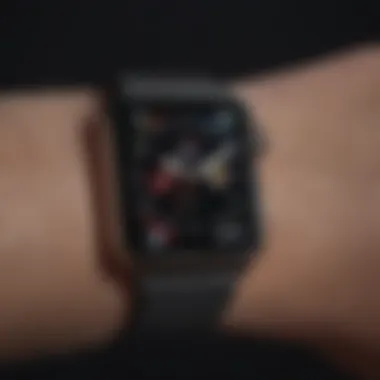
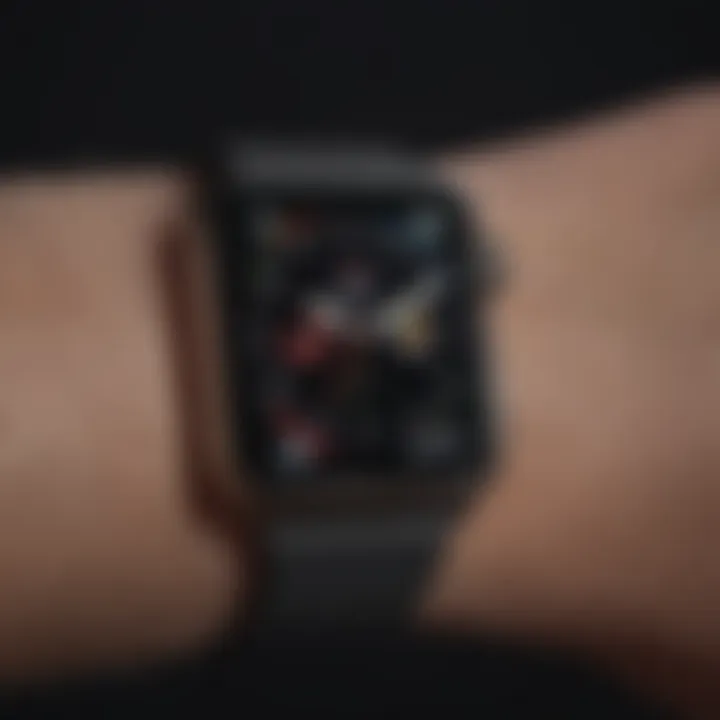
Product Overview
Apple Watches have carved their niche with an impressive blend of technology and style. Since their inception, they've become synonymous with the concept of wearable technology, offering not just timekeeping but a myriad of features that cater to fitness enthusiasts, tech geeks, and the everyday user alike. Each series has brought forth its own set of innovations, establishing a solid lineage in the world of smart wearables.
Key features and specifications vary significantly across the models. For instance, the Apple Watch Series 7 introduced a larger display that enhanced usability while maintaining a sleek aesthetic. Meanwhile, the introduction of blood oxygen monitoring in the Series 6 represented a significant leap in health tracking capabilities. These iterations stretch across technical specifications like processor speeds, battery life, and activity tracking features, which cater to various user needs.
In terms of design, Apple has made sure to not skimp on aesthetics. Each series showcases a modern look with an abundance of customizable bands and faces, allowing users to blend functionality with personal expression.
Performance and User Experience
Performance stands as a cornerstone when it comes to the Apple Watch series. With each new iteration, Apple focuses on refining the user interface and software capabilities. The Series 8, for example, boasts enhanced fitness tracking performance, augmented by improved sensor technology that provides users with a more holistic view of their health data.
User experience feedback has generally been positive, highlighting the intuitive nature of the watchOS platform. The interaction between the watch and iPhone is remarkably seamless, and users appreciate the quick access to notifications, health metrics, and even apps without needing to dig through their pockets for their phones.
Comparison with Previous Models or Competitors
When comparing the current and previous series, there’s a distinct narrative of advancement. The leap from Series 5 to Series 6 was notable, primarily because of the introduction of the always-on display and detailed health monitoring features. Another noteworthy mention could be found in the competitive landscape; brands like Samsung and Garmin are also making strides in the smartwatch space.
In contrast, Apple tends to focus on the all-in-one package combining both productivity and health monitoring. This value proposition is compelling for those looking to consolidate their tech gadgets.
Tips and Tricks
Optimizing your Apple Watch can elevate your experience tremendously. A few simple tips include:
- Double-tap to answer calls: This handy feature makes it easier to communicate without fumbling.
- Customize notifications: Manage what notifications you receive to avoid constant distractions.
- Utilize Activity Rings: Regularly check your activity stats to stay motivated towards your fitness goals.
Hidden features often go unnoticed. For instance, many users are unaware of the ECG app that can be lifesaving for those with heart conditions. Additionally, features like fall detection and emergency SOS can provide an extra layer of security.
Latest Updates and News
Recent developments in Apple Watch software updates have introduced new features, particularly in health monitoring and fitness tracking. The latest watchOS updates have enhanced functionality for existing models, keeping users engaged without the need for a new purchase.
There's a buzz in the tech community concerning upcoming models, with speculation revolving around health analysis capabilities, such as blood glucose monitoring, which could revolutionize how we manage diabetes through wearables.
Overall, the Apple Watch series reflects Apple's commitment to not just keep pace with the evolution of technology, but to genuinely lead in innovation. Whether you’re a newcomer or a seasoned user, understanding these nuances can help in making an informed choice when selecting your next wearable.
Prelude to Apple Watch Series
The Apple Watch has increasingly become a staple in the wearables market. This importance can be attributed to its ability to blend cutting-edge technology with daily practicality. The Apple Watch Series offers various features that cater to health, fitness, and daily convenience—elements that resonate strongly with today’s tech-savvy crowd.
Evolution of Apple Watch
The Apple Watch made its debut in 2015, a time when wearable technology was still carving out its niche. It started out primarily as a notification device, allowing users to discreetly check messages and alerts without constantly reaching for their phones. Each subsequent model brought significant enhancements, evolving into tools that monitored health metrics, facilitated communication, and integrated seamlessly with a host of applications.
With each series, Apple incorporated feedback from the user community. Notable improvements include introducing GPS capabilities, cellular options, and advanced health sensors. For instance, the Series 4 highlighted not just fitness tracking but also an ECG feature that underscored Apple's commitment to health monitoring. With every iteration, Apple has sought to improve functionality while maintaining an aesthetic appeal that keeps users coming back.
Current Models Overview
As of the latest updates, Apple offers various models, each catering to users with different preferences and requirements. These models range from budget-friendly options to high-end iterations filled with advanced functionality.
- Apple Watch SE: This model offers users essential functionalities such as fitness tracking, heart rate monitoring, and an integration with Apple’s ecosystem, all without breaking the bank.
- Apple Watch Series 8: It continues to build on reliability with health features like skin temperature sensing, improved battery life, and advanced activity tracking.
- Apple Watch Ultra: Marketed as a rugged counterpart, the Ultra is tailored for adventurous users. It boasts features such as enhanced durability, advanced GPS tracking, and a larger display for improved usability in various conditions.
In summary, each model is thoughtfully designed to meet a specific set of user needs, whether it be for fitness, adventure, or daily utility. With ongoing software developments, the potential of these devices continues to evolve, providing fresh opportunities for integration into everyday life.
“The Apple Watch isn’t just a watch; it's a lifestyle companion that adapts to the wearer’s needs.”
Through this understanding of the evolution and current lineup of Apple Watch models, we can appreciate the importance of making an informed choice tailored to personal needs. This article will help guide that choice, offering insights and comparisons to ensure readers feel confident in selecting the Apple Watch that aligns with their lifestyle.
Design and Build Quality
The design and build quality of the Apple Watch series play a pivotal role in the user experience. It's not just about aesthetics; the materials and craftsmanship of the watch affect its durability, comfort, and overall appeal. For potential buyers, understanding these elements can greatly influence their choices, especially when some models are touted for their premium finishes while others prioritize lightweight convenience.
Materials Used
Aluminum
Aluminum is often the first material many think of when considering the Apple Watch. Its light weight makes wearing the watch a breeze, almost as if you’re not wearing anything at all. One of the standout features of aluminum is its resistance to rust and corrosion, which is essential for a device frequently exposed to sweat or the elements.
The key characteristic here is its affordability compared to other materials in the lineup. This makes aluminum a popular choice among budget-conscious consumers seeking a balance between functionality and aesthetics. However, while it is sturdy enough for daily wear, it can easily scratch, requiring extra care for those who prefer pristine appearances.
Advantages: Lightweight, corrosion-resistant, and budget-friendly.
Disadvantages: Prone to scratches, which may detract from its appearance over time.
Stainless Steel
Stainless steel brings a touch of elegance and durability to the table. Its shiny finish and robust structure cater to a more upscale market. The material is naturally heavier than aluminum, which some wearers appreciate for the solid feel it imparts. Also, stainless steel is more resistant to scratches, maintaining that sleek look for longer.
What makes stainless steel especially noteworthy is its variety of finishes, allowing for a more personalized look. This versatility can attract professionals looking to make a style statement while keeping functionalities intact. However, its weight might not suit everyone's preference, particularly those who enjoy a lighter feel on their wrist.
Advantages: Durable, scratch-resistant, and available in various finishes.
Disadvantages: Heavier than aluminum, which may not be everyone's cup of tea.
Ceramic
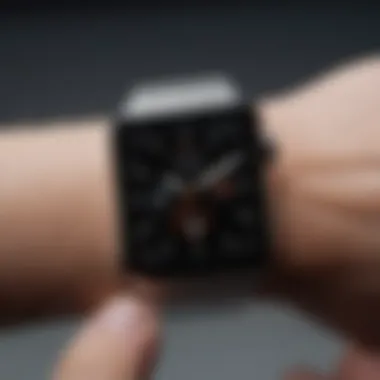
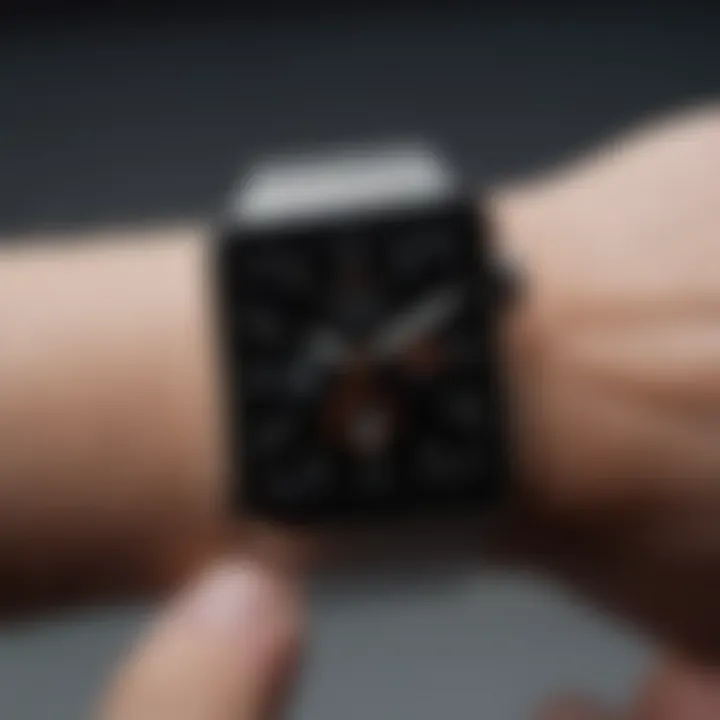
Ceramic takes the cake for being both stylish and surprisingly durable. Often regarded as a luxury option, ceramic is lightweight yet resistant to both scratches and stains, making it a prime candidate for those who lead active lifestyles but don’t want to compromise on style.
The uniqueness of ceramic lies in its ability to be colored in various shades, allowing consumers to truly express their style. However, while ceramic is known for its toughness, it’s important to note that it can be more susceptible to chipping if it faces a strong impact on solid surfaces.
Advantages: Scratch-resistant, stain-proof, and available in various colors.
Disadvantages: More prone to chipping and generally more expensive.
Size Variations
In the Apple Watch series, size variations are crucial. Consumers have different wrist sizes and preferences for how they want their device to fit. Offering multiple size options means that Apple can cater to a broader audience, from those who prefer a more unobtrusive watch to others who like a bolder statement piece. It’s not just about fitting; it’s about personalizing the gadget to enhance user experience.
Display Technology
The display technology used in Apple Watches further elevates the product's usability. With innovations like OLED technology, the screens are not only clearer but also more energy-efficient. The brightness levels, touch responsiveness, and resolution enrich the user's interaction with the device, making it more enjoyable to engage with apps or alerts.
Understanding the nuances of design and build quality provides insight into the durability, comfort, and aesthetics that are integral to the Apple Watch's standing in the wearables market. Highlighting these aspects allows potential owners to make an informed decision tailored to their lifestyle.
Technical Specifications
The discussion of technical specifications is key in discerning among the various Apple Watch series. It serves as a guiding light for potential buyers and enthusiasts alike, offering concrete details that illuminate the differences and advantages of each model. As consumers increasingly rely on wearables for not just notifications but also health data and connectivity, understanding the underlying tech becomes essential. The distinctions in processor performance, storage options, and battery endurance directly impact the user experience; this often dictates which model fits individual needs best.
Processor Differences
The processor is the heart of any smartwatch, dictating how responsive and efficient the device will be. For the Apple Watch series, each model boasts increasingly capable chips that enhance performance and functionality. For instance, the Apple Watch Series 7 is equipped with the S7 chip, allowing for smoother app performance and faster navigation compared to its predecessors, like the Series 6 that houses the S6 chip.
- Speed & Responsiveness: A more advanced processor not only makes the device feel snappier but also enhances features like Siri and fitness apps.
- App Compatibility: Newer processors open the door to more demanding applications, thereby expanding what users can do on their wrist.
- Future-Proofing: A powerful chip means the device will be relevant for longer, capable of handling updates and new features for years ahead.
In summary, the advancements in processing technology can make a significant difference in everyday use, making it a crucial factor in deciding which Apple Watch to choose.
Storage Capacities
When it comes to storage, the Apple Watch series has made noticeable strides, particularly in models like the Series 7 and the Ultra, which feature expanded storage capacities. Having more onboard storage not only allows users to keep music and apps accessible but can also improve the functionality of fitness tracking.
- Standard Models: Earlier models typically offered 32 GB, which is adequate for basic functionality but falls short for users wanting to download more applications or music.
- Higher-End Models: The more recent models can support up to 64 GB or even higher. This increased capacity means that users can download a variety of apps without needing to constantly delete old ones.
"The storage capabilities can greatly shift how you experience your device; having that extra room for apps or playlists can be a game-changer."
Ultimately, the storage capacity of each Apple Watch series should be considered in light of how you intend to use the watch.
Battery Performance
Battery performance is one of the top priorities for any smartwatch user. Few things are more frustrating than a watch that runs out of juice at an inopportune moment. Apple watches are designed with varied battery capacities, which directly influence how long the device can function.
- Standard Usage: Most models are built to last for 18 hours on a single charge under normal conditions, allowing for all-day wear without worry.
- Heavy Users: However, for fitness enthusiasts who use GPS and fitness tracking constantly, models may require a nightly charge to keep up with demanding use.
- Charging Technology: Furthermore, Apple has improved its charging capabilities, with newer models featuring fast charging options that can give you significant power with just a short charge.
Battery life can differ markedly, and understanding each model's potential will help clarify what to expect from your Apple Watch in practice.
Health and Fitness Features
In today's fast-paced world, health and fitness features on wearable devices like the Apple Watch play a crucial role. These features are not just gadgets but vital tools that can help users monitor their health, encouraging a more active lifestyle. The growing concern over health awareness has transformed how consumers view technology, particularly wearables. Apple has leaned into this by ensuring its smartwatch series comes packed with features aimed at tracking and managing one's well-being. The importance of these functions cannot be overstated—consumers often look for devices that can help them not only in day-to-day activities but also in achieving health goals.
Heart Rate Monitoring
Heart rate monitoring is a standout feature that many Apple Watch owners appreciate. With the ability to continuously track heart rates, users are given immediate feedback on their cardiovascular health. This isn't just for fitness buffs; it can alert users to potential health issues when resting heart rates are outside the normal range. Beyond just numbers, understanding heart metrics can guide users toward healthier choices—like adjusting workout intensities or recognizing when stress levels might be creeping up. Many utilize this feature to maintain optimal training zones or as simple reassurance during workouts.
ECG and Blood Oxygen Considerations
The integration of ECG (electrocardiogram) capabilities and blood oxygen monitoring adds another layer of sophistication to the Apple Watch's health features. The ECG function allows users to take quick readings, helping to capture any anomalies that might suggest atrial fibrillation, among other issues. Similarly, blood oxygen monitoring provides insights into physical condition, particularly useful for athletes or individuals at high altitudes. These capabilities often assist users in making informed health choices, solidifying the Apple Watch as more than just a timepiece.
Fitness Tracking Capabilities
Fitness tracking is where the Apple Watch can truly shine, appealing to both seasoned athletes and casual users alike.
Workouts
Workouts tracking is sophisticated and robust in its offerings. The Apple Watch recognizes a range of activities, from running and swimming to yoga and HIIT, adapting the tracking methods based on the user’s chosen exercise. This flexibility is a key characteristic that attracts users, as it allows for personalized fitness experiences. Unique features such as automatic workout detection mean that even if a user forgets to begin tracking, the watch will pick up the activity anyway, ensuring no effort is overlooked. Many find this thoroughness beneficial, as it encourages routine and accountability, not to mention providing valuable data they can review over time.
Activity Rings
The Activity Rings have gained considerable popularity for their visual and motivational aspects. This feature visually summarizes daily activity levels in three colored rings, allowing users to set and achieve goals in movement, exercise, and standing. The engaging and straightforward layout makes tracking daily performance easier, adding a game-like element to personal fitness. This method is appealing because it transforms mundane activity into a more interactive experience. Users can easily assess if they are meeting their goals, which can foster motivation. On the downside, some may find themselves too fixated on the rings, which could lead to undue stress or competition.
Ultimately, these health and fitness features serve a critical function in enhancing user experience, promoting healthier lifestyles, and making the Apple Watch a desirable gadget in today’s health-conscious society.
Software and Ecosystem
When diving into the world of the Apple Watch, it's crucial to understand that the device is more than just a timepiece; it's a sophisticated extension of the Apple ecosystem. The software and ecosystem surrounding Apple Watch plays a pivotal role in shaping user experience. This isn't just about having features at your fingertips, it’s about how seamlessly they integrate into your daily life. It’s the glue that binds Apple’s hardware with the digital functionalities that make life easier, healthier, and more organized.
WatchOS Features
The Apple Watch runs on the proprietary WatchOS, which has evolved significantly since its inception. Each iteration introduces new features that enhance usability and functionality, such as customizable watch faces, notifications management, and improved app support. The latest version allows for greater interactivity with widgets, making it possible to glance at crucial information without navigating through multiple menus. Additionally, the built-in GymKit enables smooth connection with gym equipment, facilitating an effortless synchronization of workout data.
Notably, safety features have also been refined over time. Fall detection and emergency SOS are integrated into the OS, making it a reliable companion for those who prioritize safety during physical activities.
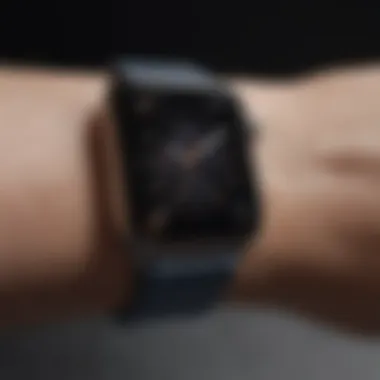
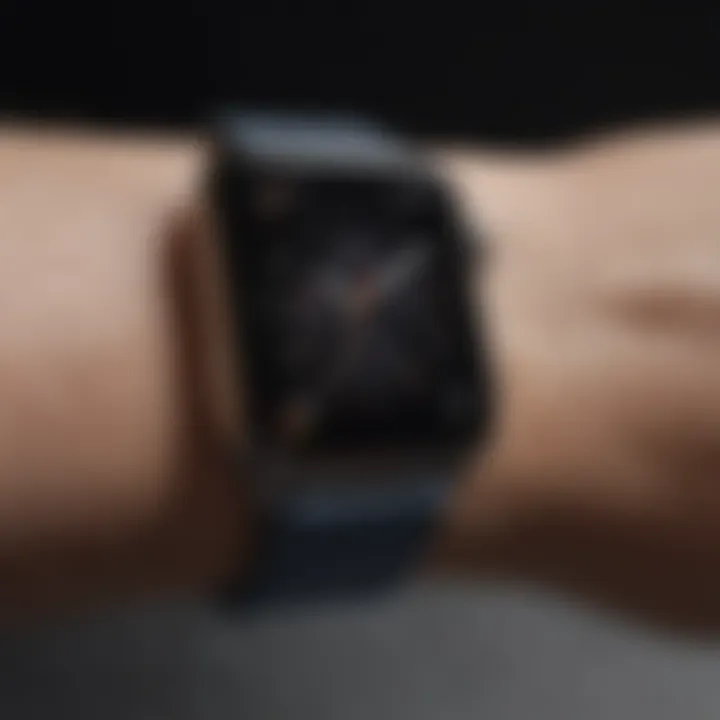
App Availability and Compatibility
In terms of applications, the Apple Watch doesn't skimp. With a wide range of both first-party and third-party apps available, users can engage with everything from productivity tools to health trackers. Some commonly used apps include WhatsApp for messaging, Strava for fitness tracking, and even apps for meditation like Calm. The ability to run apps directly on the watch means users can often leave their phone behind while still enjoying connectivity and functionality.
Moreover, compatibility with iOS is another feather in the cap of Apple Watch. The seamless integration allows users to respond to texts, control music, and track fitness without much effort. All these create a robust experience that feels as fluid as a hot knife through butter.
Integration with Other Apple Devices
The Apple ecosystem shines especially brightly when examining how different devices communicate and enhance each other’s features. The handoff feature means that you can start an email on your iPhone and finish it on your Apple Watch, and vice versa. Similarly, using your Apple Watch for Apple Pay is a breeze, allowing for quick transactions with just a tap of your wrist.
When combined with the HomeKit platform, it enables users to control smart home devices straight from their wrist. Imagine dimming the lights or adjusting the thermostat without reaching for your phone or shouting at a smart speaker.
All of these integrations elevate the Apple Watch beyond a simple wearable instrument; it becomes an essential part of a larger, interconnected lifestyle.
By effectively tying your Apple Watch to other devices like the iPhone or Mac, you don’t just enhance convenience; you maximize the potential of your tech arsenal.
In summary, the software ecosystem of the Apple Watch augments its already impressive hardware capabilities, bridging the gap between digital convenience and daily life. This comprehensive ecosystem is a vital consideration for anyone looking to invest in an Apple Watch. It highlights a user experience that is both intuitive and rich, making it a sound choice in the crowded market of wearables.
User Experience and Customization
In any wearable technology, user experience plays a pivotal role, shaping how individuals interact with their devices. For the Apple Watch series, the experience personifies the intersection of design, functionality, and customization. A seamless user experience fosters loyalty and engagement, especially in a market flooded with options. It's not merely about tracking your workouts or your heart rate—it’s about how intuitive and personal the interaction feels. As individuals integrate their watches into daily routines, the importance of customization comes to the forefront. How can one tailor features, notifications, and designs to suit their lifestyle and preferences? In the following subsections, we will dive into the specific elements that contribute to the overall user interface design and the various personalization options available.
User Interface Design
The user interface (UI) of the Apple Watch is a blend of minimalism and functionality. The layout prioritizes ease of use, ensuring that features aren’t buried beneath layers of complexity. Apple employs a grid layout for apps, making navigation straightforward. Instead of fumbling to find what you need, users can express their desires simply through taps and swipes. The icons are designed to be both recognizable and accessible, which means that even if you're not tech-savvy, you won't feel lost.
Key features of the UI include:
- Taptic Feedback: This subtle vibration alerts you to notifications without being intrusive. You can feel when it buzzes instead of hearing a loud ping.
- Glances: A swipe direction can bring forth information such as weather, activity stats, or even calendar reminders. It condenses information, so you're not overwhelmed.
- Compatible Apps: A myriad of apps enhances usability. Whether it's tracking health metrics or checking messages, these apps seamlessly plug into the watch's interface.
This thoughtful design contributes to a pleasant experience, making it less of a task to interact with the device. The rounded corners and vibrant displays also make it visually attractive, encouraging users to engage continuously.
Personalization Options
A product that resonates personally fosters better attachment and satisfaction. The Apple Watch series embraces this notion with a range of personalization options that help users make their devices truly theirs. Personalization might be a buzzword; however, with the Apple Watch, it transcends cosmetic adjustments—it tailors the user's experience.
There are several facets to consider when customizing your watch:
- Watch Faces: Users can choose from various designs or create their own. From analog to digital, minimalist to information-rich—these options allow users to express personality.
- Complications: These add-ons for watch faces display real-time information like weather updates or stock prices directly on the face. It ensures that the most vital data is just a glance away.
- Bands and Materials: Not only does the choice of band affect aesthetics, but it also impacts comfort during daily wear. Apple offers a wide selection—ranging from sporty rubber to luxurious leather, enabling users to switch depending on occasion or mood.
Each of these customization elements elevates the Apple Watch from a standard wearable to a uniquely personal device. As users delve into these options, they often discover functionalities that enhance their daily lives, reinforcing the bond between themselves and their watch.
Comparative Chart of Apple Watch Series
Evaluating the various Apple Watch models through a comparative chart serves as a vital tool in unpacking the intricate layers of options available to consumers. Not only does it highlight technological specifications, but it also succinctly lays out key features that may tip the scales for potential buyers in their decision-making process. Understanding the differences through a side-by-side framework aids in discerning where one model shines compared to others, addressing core consumer needs such as fitness tracking capabilities, compatibility with other devices, and price points.
When undertaking the process of selecting an Apple Watch, the vast array of choices can notably overwhelm. This comparative chart helps cut through the noise, providing a straightforward view of what each series offers. By systematically breaking down specifications and functionalities, readers can make informed decisions based on their personal needs, preferences, and budget considerations.
Side-by-Side Specifications
Here, we compare critical specifications across different Apple Watch models. Consider the following key aspects when choosing:
- Display Size: Some users may prefer larger displays for ease of readability, while others favor a compact design.
- Battery Life: The longevity of battery performance can be a dealbreaker, particularly for those using fitness tracking features extensively.
- Health Monitoring: Advanced health features, such as ECG capabilities or advanced heart rate monitoring, can vary significantly by model.
- Connectivity: Users should evaluate whether they need cellular capabilities or if standard Bluetooth connection suffices.
| Model | Display Size | Battery Life | ECG Feature | Connectivity | Price Range | | Apple Watch Series 7 | 41mm / 45mm | Up to 18 hours | Yes | GPS + Cellular / GPS | $399 - $749 | | Apple Watch SE | 40mm / 44mm | Up to 18 hours | No | GPS + Cellular / GPS | $279 - $329 | | Apple Watch Series 6 | 40mm / 44mm | Up to 18 hours | Yes | GPS + Cellular / GPS | $399 - $749 | | Apple Watch Series 3 | 38mm / 42mm | Up to 18 hours | No | GPS + Cellular / GPS | $199 - $229 |
This representation provides a clear snapshot of essential details, making it easier to form conclusions regarding which features are most relevant.
Pros and Cons of Each Model
Understanding the strengths and weaknesses of various models equips consumers for a tailored selection experience. Every Apple Watch series comes with its own set of pros and cons:
Apple Watch Series
- Pros:
- Cons:
- Larger display for improved readability.
- Comprehensive health features including ECG.
- Sleek design with durable materials.
- Higher price point may not appeal to all users.
- Battery life is not significantly improved over previous models.
Apple Watch SE
- Pros:
- Cons:
- Affordable option with essential features.
- Good battery life in a stylish design.
- Lacks advanced health metrics like ECG.
- Limited always-on display functionality.
Apple Watch Series
- Pros:
- Cons:
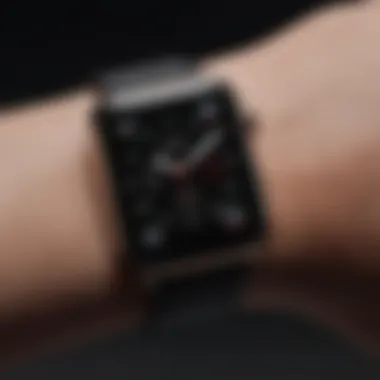
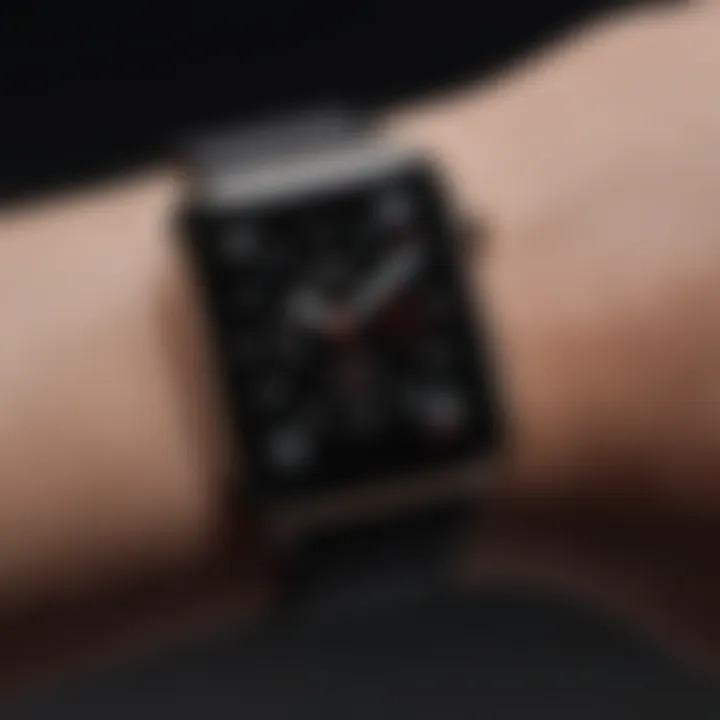
- Similar to Series 7 with slightly lower cost.
- Offers new blood oxygen monitoring.
- May become outdated faster with newer models available.
Apple Watch Series
- Pros:
- Cons:
- Budget-friendly option for basic functionality.
- Still maintains essential health tracking capabilities.
- Older hardware, which may result in slower performance.
- Missing advanced features compared to newer versions.
The comparative analysis of these model characteristics allows potential buyers to weigh their priorities against the options, guiding them toward the ideal Fitbit that resonates with their lifestyle and budget. Ultimately, this mapping of in-depth specifications and an evaluation of advantages and drawbacks creates a more informed purchasing decision.
Value for Money
When considering any gadget, especially a smartwatch like the Apple Watch, the term "value for money" often becomes a crucial touchstone for consumers. People want to feel their investment in technology is worth it—this includes the features offered, longevity, and how well the device performs its intended functions. In the landscape of different Apple Watch models, the value for money concept takes on added significance because it spans various price tiers while also catering to vastly different lifestyles and tech needs.
A savvy buyer would weigh not only the purchase price but also the ongoing benefits a specific model brings. For instance, a higher-end model may boast advanced health monitoring features or premium materials, but is that worth the significant jump in cost? Here, we look into certain key elements that contribute to a model’s perceived value: reliability, user satisfaction, and compatibility with other devices. Each of these builds a nuanced picture of what the buyer is really getting for their cash—and emotions tied into that purchase.
Pricing Analysis
Pricing is arguably one of the first aspects consumers examine when weighing options. Apple offers several tiers for its watch series—ranging from the more budget-friendly SE model to the premium Ultra version. The prices can vary significantly based on factors like material quality, functionality, and available health features.
- The Apple Watch SE is priced competitively, offering essential functions at an appealing cost, making it an excellent entry point for newcomers.
- The Apple Watch Series 8 not only falls in the mid-tier price range but also provides additional health tracking features and more customization options, catering to fitness aficionados.
- On the higher end, the Apple Watch Ultra commands a premium price by delivering features like enhanced durability for the adventurous types who need a rugged device.
Several users might find themselves pondering whether the additional cost for upgraded models is justified based on their individual needs. For instance, a casual wearer may not need the extensive capabilities of the Ultra, while a fitness devotee could consider it essential.
Cost-Benefit Evaluation
When delving deeper into the cost-benefit equation, prospective buyers should evaluate what features are essential to them versus nice-to-have enhancements. For example, investing in better health features can be a game-changer for those who prioritize fitness and health metrics.
- Benefits of Higher-End Models:
- Benefits of Mid to Low-End Models:
- Advanced metrics such as ECG monitoring, blood oxygen levels, and enhanced GPS tracking offer considerable advantages if these are applicable to the user's lifestyle.
- Durability means that for someone regularly outdoors, opting for a high-end model may save on potential replacement costs down the line.
- A more economical choice may not have the most cutting-edge features but can still meet general health tracking needs effectively.
- Those who are more inclined toward a less tech-heavy lifestyle will find functionality sufficient in a model like the SE.
Evaluating the benefits and weighing them against the cost helps pinpoint the true value of each model. While a high price point can seem appealing, it's vital to discern whether those extra features will genuinely enhance the user experience or just add unnecessary fluff.
"Investing in technology should read like a relationship—worthwhile and gratifying in the long haul."
Consumer Preferences and Trends
Understanding consumer preferences and trends is fundamental in analyzing the Apple Watch series. As technology evolves, so too do the needs and expectations of users. When discussing Apple Watches, it’s not just about features on paper; it’s about how these features resonate with everyday users. Shoppers nowadays lean towards devices that seamlessly integrate functionality with lifestyle. Users often search for products that provide real value—this is where knowing the market comes into play.
Market Analysis
Analyzing the market for Apple watches necessitates a close look into current buying behaviors. A few prominent trends have emerged:
- Health Consciousness: With an increasing emphasis on health and fitness, buyers tend to choose models that offer robust health tracking features. The Apple Watch’s heart health monitoring capabilities, such as ECG and blood oxygen levels, attract individuals looking to take charge of their wellness.
- Style and Fashion: People also treat smartwatches as fashion accessories. Therefore, design options such as colors, materials, and sizes impact purchasing decisions significantly. Certain series, like the Apple Watch Series 7, have been praised for their aesthetics, appealing to a fashion-forward crowd.
- Ecosystem Compatibility: Apple’s ecosystem keeps drawing users in. Many potential buyers appreciate how the Apple Watch ties cleanly into their existing portfolio of devices. This synergy is influential for those heavily invested in Apple products, leading them to prefer the brand over competitors.
Ultimately, it’s not simply about technology; it’s about how that technology fits the user’s life. As trends shift, technology must adapt, which is crucial for Apple based on consumers' preferences.
Feedback from Users
When discussing the Apple Watch series, user feedback acts as a substantial predictor of future sales and innovations. Consumers often voice their opinions in various forums like Reddit or Facebook, sharing personal experiences that can influence peers’ choices.
Here are some recurring themes in user feedback:
- Usability: Many users rave about the intuitive interface of the Apple Watch. New adopters find it easy to navigate, making the transition from older models or different brands smooth.
- Battery Life Complaints: While some users appreciate the battery longevity, others express frustrations, especially during heavy use. Feedback reveals that ultra-active users might seek longer-lasting devices, nudging Apple to consider this in design adjustments.
- Satisfaction with Updates: Users frequently commend Apple for their consistent software updates. The long-term support contributes to customer loyalty, showcasing how critical ongoing improvements can be in user satisfaction.
"Consumer voices are like a compass guiding the future direction of technology," a tech analyst shared.
Given these insights, it's clear that what consumers say matters. Apple fans want their voices heard, and the company appears to listen, aligning its developments with public sentiment. With trends ever-changing, monitoring consumer preferences will continue to be key for advancing the comprehensive vision of the Apple Watch.
Finale
As we wrap up our exploration of the Apple Watch series, it’s clear that understanding these devices goes beyond mere features and specs. The Apple Watch has evolved significantly since its inception, presenting a diverse range of options suited for various lifestyles, preferences, and health needs. Relying on everything analyzed in this article, the conclusion should encapsulate the various considerations and benefits each model brings to the table.
When contemplating which Apple Watch to invest in, potential buyers need to consider several factors closely. For example, the health and fitness features available can vary substantially across models. If monitoring heart rate and conducting ECGs are top priorities, newer models will naturally stand out. However, if you find basic notifications and fitness tracking sufficient, earlier versions could deliver more value for the price.
One cannot ignore the value for money either. With pricing tiers for different models, understanding what features are essential versus what might be considered luxuries is crucial. Balancing your budget against your requirements will optimize returns on your investment.
In the realm of user experience, the software interface of the Apple Watch reflects a seamless interplay between technology and usability. Hence, appreciating the nuances of customization options and compatibility with other Apple devices can enhance the overall satisfaction.
Final Thoughts on Choice
In arriving at a choice, it's essential to reflect on personal preferences and lifestyle alignments. Take into account how often you'll use sleep tracking or how critical cellular connectivity is for you. Likewise, don’t shy away from exploring user feedback and market trends to gain insights beyond the hype.
With the Apple ecosystem's robust integration, each watch can bridge personal technology experiences to enhance daily living. Hence, whether you aim for the latest gadget or a more economically priced watch, your decision should be aligned with what adds true value to your life.
Ultimately, this discussion serves as a guide for anyone trying to make sense of Apple’s wearable offerings. The right choice boils down to what fits seamlessly into your daily routine, satisfying both functionality and style. As Apple continues to innovate, staying informed and remaining aware of personal needs will ensure that your chosen model complements your lifestyle effortlessly.
"The best watch for you is the one that fits into your daily life and helps you achieve your health and fitness goals."
With all this information at hand, you can navigate the Apple Watch landscape confidently, choosing wisely to enhance your wearable technology experience.



